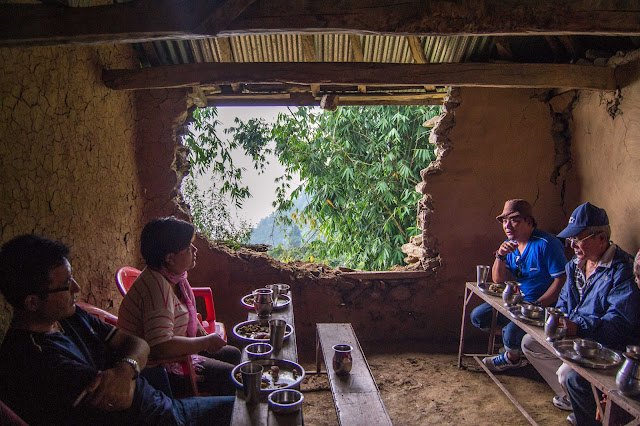On the 25th of April, 2015, over 8000 people lost their lives, more than
21,000 were injured, 21 died whilst on the verge of making their dreams come true to
climb Everest and hundreds of thousands became completely homeless; all in a
matter of seconds.
The 7.8 Mw earthquake was so strong that the jolt was even registered here at my workplace around UK time 07:50 AM.
Figure courtesy of Dr. Houcheng Huang at Diamond Light Source Ltd.
According to Avouac et al., “The rupture propagated eastwards for about 140
km, unzipping the lower edge of the locked portion of the Main Himalayan Thrust
(MHT) fault at about 2.8 km per second along this zone.” This eastward unzipping
of the fault continued as observed during the 7.3 Mw aftershock on
the 12th of May, 2015, and the transfer of stress to neighbouring
regions should facilitate future rupture of other areas of the MHT adjacent.
I will be sharing photographs of the sites I visited in Nepal during September,
2015, starting with Gorkha, then moving on to Kathmandu and Bhaktapur, and reporting on the progress made in these areas by then and as said by the victims of the earthquake.
Gorkha
As I walked up the hills, I could see the damages done to the houses from a mile afar. One of the many reasons as to why there had been almost nothing done to repair these houses were due to the arrival of monsoon season (June to September) in Nepal, which hampered manual work and introduced new forms of road bloackages almost everyday, therefore no materials including bricks or stones could be transported. A hike to this village, Siranchowk, from Gorkha Bazaar would take at least 8 hours.
Temporary shelters made up of jasta pata or corrugated steel sheets were set up. This particular one in the picture below housed 15+ people during the rainy season. Although most prepared their food in their homes, no house in Siranchowk was safe enough to be slept in due to multiple cracks and the sheer danger that they may collapse any moment if another quake were to hit. Everyone would spend the majority of their days outside in the fields or in the shelter. The jasta pata were bought from the money sent in by family members living abroad and donations sent in from the UK. This was the only form of aid the residents of Siranchowk had recieved by Sept, 2015. Fortunately, no one was seriously injured here as everyone in the village were working in the fields on the day the earthquake hit.
A community meeting was held in the school nearest to the village as part of my visit there. Due to the decrease in population of youngsters in the village; with many of them migrating to cities for work and higher education, this school currently holds no student. Here, a hole in one of the classrooms' walls has resulted due to the earthquake. An area where perhaps no one can beat Nepalis is in hospitality. Even when food was scarce, we were welcomed with a feast which filled me with guilt to the core. All I could do was thank them a hundred times.
This elderly who suffers from tracheal cancer has not been able to visit a doctor since the natural disaster occurred.
One of the sad and hard-hitting facts that I encountered during my
journey was that the hierarchical caste system in Nepal is still
prevalent to this day. Even in such dire times, people labelled by
society as having service-castes found themselves in a difficult
position to ask for help, let alone were they provided with aid. People may argue by saying that there is a decline in such issues but negative aspects of culture and tradition like these are not something to be preserved and must be fought against until no trace of it is seen in practice.
In terms of neccessities, Siranchowk, like many of the villages in Nepal, does not lack in water resources which is its plus side. The monsoon had delayed works on agriculture and farming but back in September, they said they had enough for a year's worth of food supplies.
I have yet to contact those who I met in Siranchowk to ask them about the progress they've made so far. My trip to Gorkha was extremely confusing to me, in a sense that everything man-made were in ruins and rubbles whereas when I looked through towards nature, everything seemed so serene and still. It was difficult to imagine that such a beautiful place like this could tremor so violently and bring many to their downfall...
Reference:
Avouac, J.-P., Meng, L., Wei, S., Wang, T., Ampuero, J.P., Lower edge of locked Main Himalayan Thrust unzipped by the 2015 Gorkha earthquake. Nature Geoscience . ISSN 1752-0894, 2015















No comments:
Post a Comment